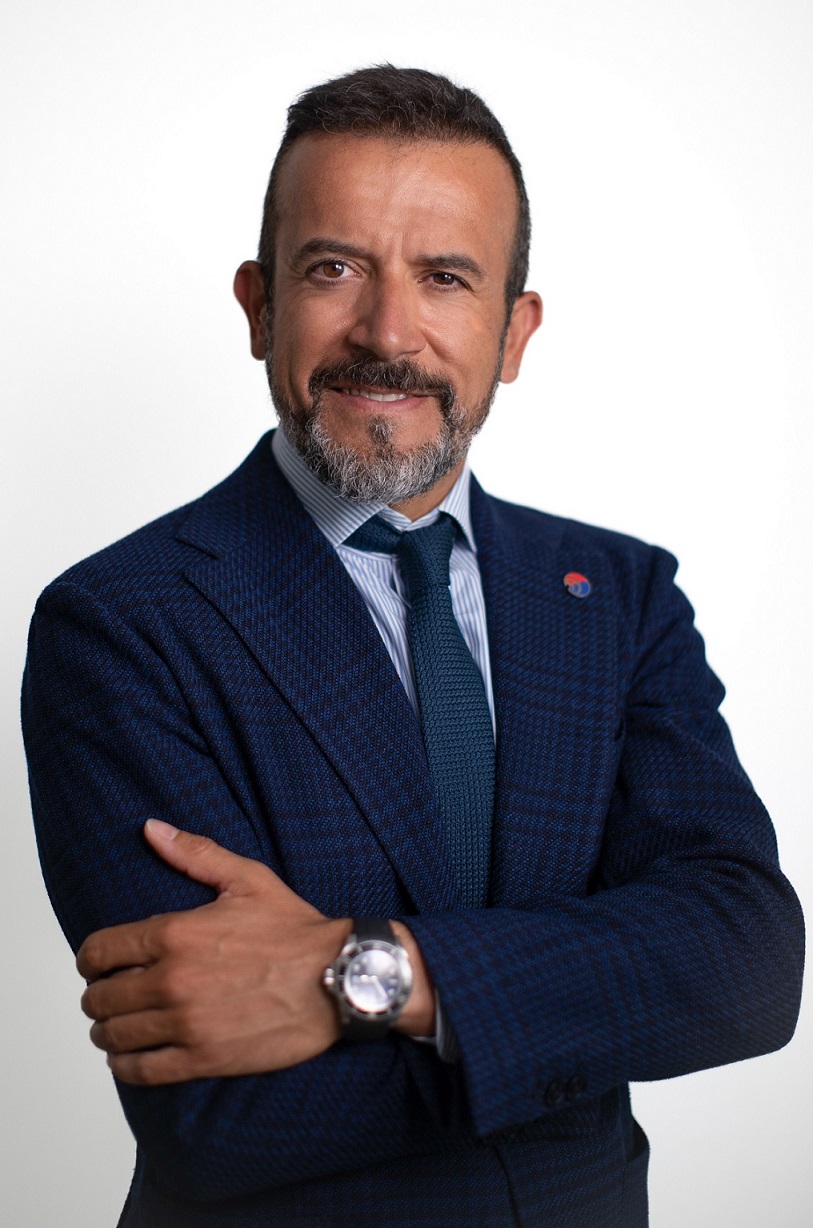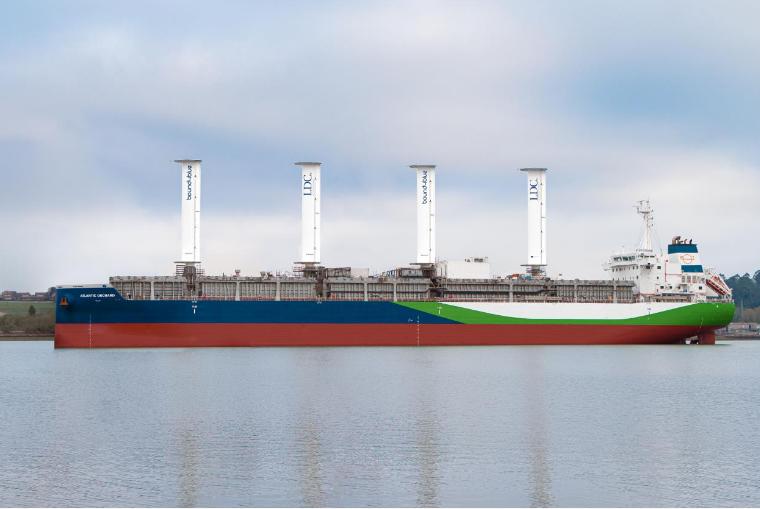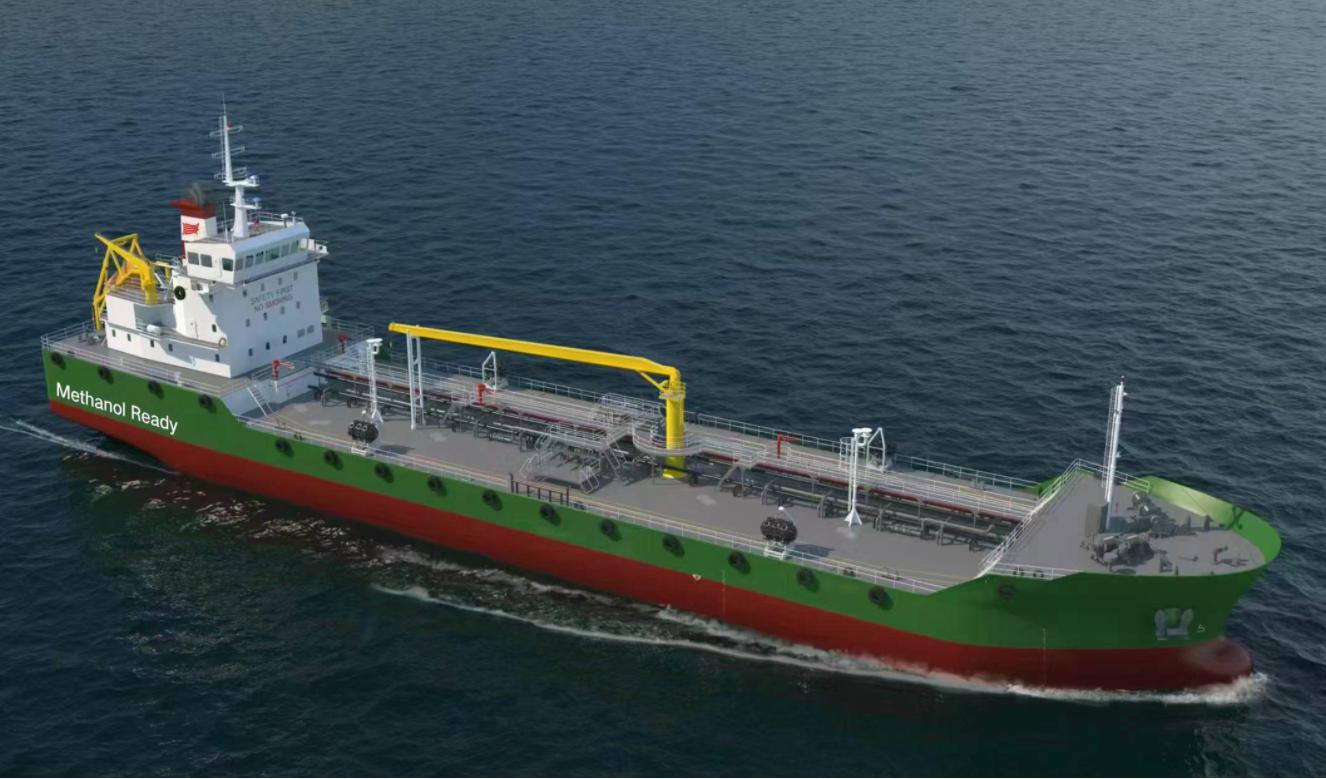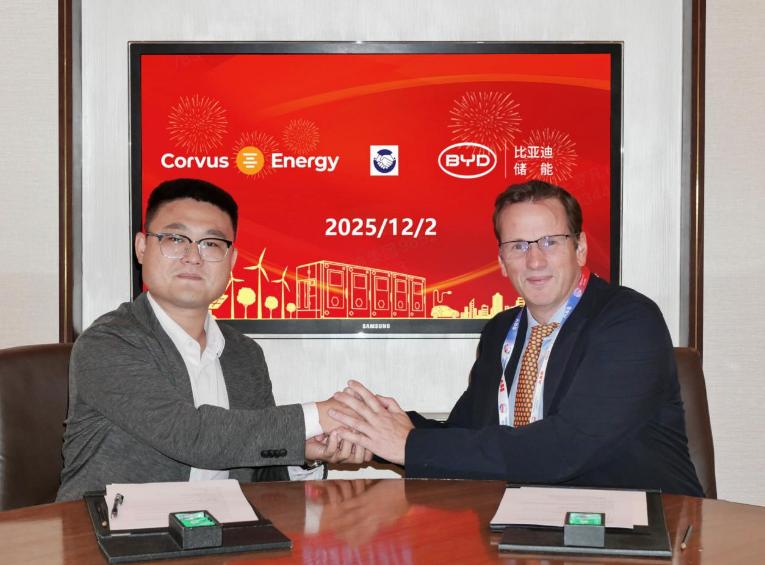Once best known for its leading position as a ballast water treatment system manufacturer, ERMA FIRST now oversees a portfolio of sustainable marine solutions, including technologies that help ship operators to cut emissions while the need to burn fossil fuels continues.
ERMA FIRST Co-Founder & Managing Director, Konstantinos Stampedakis stresses that the Greek company is intensely focused on helping ship owners decarbonise their operations over the next 15 to 20 years with a portfolio of sustainable future-proof solutions.

ERMA FIRST Co-Founder & Managing Director, Konstantinos Stampedakis
The company has been developing a range of new energy saving devices, such as a unique modular propeller boss cap fin to cut ship fuel use, as well as alternative maritime power to connect them to shore-based electricity in ports and onboard carbon capture and storage solutions to capture their emissions at sea.
Long-term view
An offshoot of longstanding marine technology developer Environmental Protection Engineering (EPE), which has been in operation since 1977, ERMA FIRST was set up in 2009. Today, it retains its commitment to provide solutions to meet shipping’s full ballast water treatment systems needs, at a time when most competitors are quitting the market.
“We’re fully certified by IMO, USCG, China and Korea, and the combination of flexibility on installation and highly competitive OPEX has established ERMA FIRST as one of the leading BWTS makers worldwide, with systems on 3,800 vessels by the end of 2024,” said Mr Stampedakis. “Our commitment is to offer unparalleled long-term cooperation and stellar support to our BWTS customers.”
The commitment to collaborating with owner is characteristic of the ERMA FIRST position on energy saving devices and emissions, added Mr Stampedakis.
“We know alternative green fuels will be the eventual solution to maritime decarbonisation, but for the next 15 to 20 years the majority of vessels will continue to burn fossil fuels while facing increasing challenges to cut emissions from regulations such as the CII, EEXI and EU ETS.
“Decarbonisation targets for 2030, 2040 and finally 2050 are eminently achievable if all stakeholders act sooner rather than later. We passionately believe there is a lot of room for technologies to deliver operational improvements that reduce fuel consumption and vessel emissions.”
Konstantinos Stampedakis is clear that despite slow progress in ports setting up cold ironing facilities to connect ships to shoreside mains electricity or offload captured and stored carbon, owners need to start investing in existing technologies that can help reach approaching decarbonisation targets.
When the cap fits
An immediate step owners can take to cut fuel use and emissions by 2% to 3% is to fit a boss cap fin (BCF). Installed at the hub of a ship’s propeller a BCF effectively utilizes water swirl, while its fins catch and absorb the rotating water force. Together they reduce energy loss by weakening the propeller hub vortex, boosting thrust and improving propulsion efficiency.
But there are hundreds of different propeller and ship types and sizes, making it prohibitively expensive to design bespoke BCFs for individual vessels and limiting the effectiveness of off-the-shelf models.
The innovative modular design behind the ERMA FIRST FLEXCAP overcomes this issue. At least 22 different models are possible from combining various fins, caps and flanges. The modular design ensures a low cost that means a return on investment is achievable within less than12 months.
“We can adjust the angle of the fins, or the selection of the cap based on a specific vessel’s needs,” said Mr Stampedakis, “giving a bespoke propeller cap at the cost of an off-the-shelf model.”
Broader perspective
ERMA FIRST’s efforts to help owners use innovative but practical and marinized solutions to achieve looming targets for ship decarbonisation cover operations in port and at sea.
Emissions restrictions in ports are ramping up fast, with selected Californian ports already requiring 80% of berthed container, reefer and cruise ships’ power to come from a shore-based source. The rules are extending to include car carriers and tankers, respectively from 2025 and 2027.
In Europe, the ‘Fit for 55’ legislative package contains proposals for ports to have cold ironing infrastructure in place by 1 January 2030 for passenger and container ships of over 5,000gt. China already requires ships on international voyages to use the equipment if it is installed.
ERMA FIRST BLUE CONNECT is an alternative maritime power system which enables vessels to connect to a port’s electrical grid to run onboard services, systems and equipment. Meeting all latest international standards for cabling and connections, the solution means a ship can switch off its diesel generators, in order to reduce both emissions and noise while in port.
BLUE CONNECT has received approval in principle (AiP) from leading classification society Bureau Veritas and is also recognized as an Energy Saving Device by DNV. The first installation of BLUE CONNECT will be made this Fall, while ERMA FIRST has received orders for six to eight units to be delivered by the end of the year.
At sea, the focus has been on onboard carbon capture and storage (OCCS) as a method of reducing ship emissions, with two versions of the same system – named ERMA FIRST CARBON FIT - under development.
An Amine Absorption version is aimed at deepsea ships with the system capturing CO2 through well-established technology which absorbs CO2 from the flue gas and stores it in a liquid state. This reduces the volume for long distance voyages. In this case, the technology has secured AiP from Lloyd’s Register and DNV.
A simpler Calcium Hydroxide-based version is aimed at shortsea vessels. In this case, the organic alkali absorbs CO2 from flue gas in a specially designed reactor and dehydrated calcium carbonate slurry is stored onboard until its disposal at authorised facilities.
ERMA FIRST is aiming to install pilot units in August 2024, with commercial sales following from the second half of 2025, with clients indicating intent to place orders.
Under normal operating conditions OCCS systems are expected to cut emissions by 15% to 30%, said Mr Stampedakis.
Technical answers
The potential offered unmistakable evidence that technology could play a massive role in helping ship owners reach their environmental targets, Konstantinos Stampedakis emphasised. Ballast water treatment remains a major focus of ERMA FIRST’s sustainability drive, with Mr Stampedakis seeing the potential for stricter regulations ahead that will require continuous investment in systems development.
Whatever the requirement, ERMA FIRST’s sustainable solutions have been built through a blend of in-house experience and new expertise. “It is about creating and supporting a portfolio of products to help owners improve vessel performance and extend a ship’s life into the lower carbon future,” Konstantinos Stampedakis concluded.
source: ERMA FIRST
source: ERMA FIRST
The opinions expressed herein are the author's and not necessarily those of The Xinde Marine News.
Please Contact Us at:




